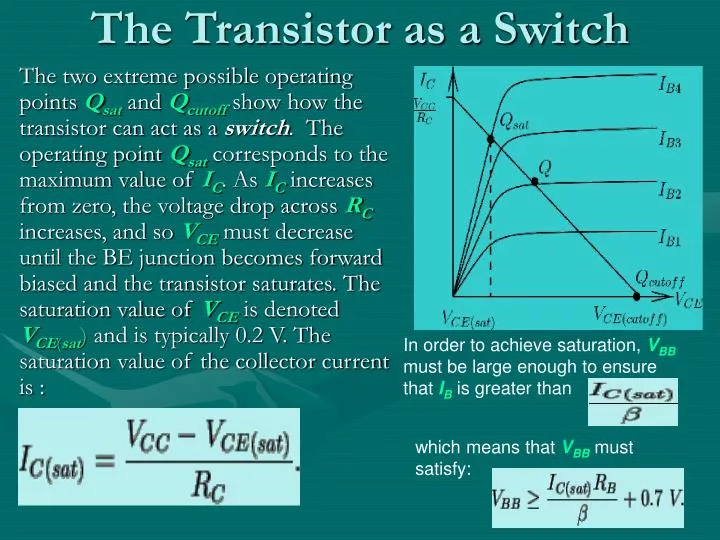

In truth, a transistor switch operating in the cutoff region or OFF mode has two junctions working in reverse bias modes.Īdditionally, if you’re using a PNP transistor, the emitter potential will harm the base. There is no collector current flow (I C = 0).Here, the transistors work as an open switch.Base-emitter junction also stays in reverse bias mode.Also, the base and input remain grounded (0v).


Since all buttons have the same functions, why do we prefer a transistor? We have different types of switches, including pushbutton switches, slide switches, toggle switches, etc.ĭespite the variety of controls, why do we use transistors as switches? So, hang in there! Why We Use Transistors as Switches In this article, you’ll learn everything about transistor switches and how they work.Įven if it’s complicated, we’ll break it down for you. Plus, you can use both NPN and PNP transistors as switches.

Transistors are devices generally used for generating, controlling, and amplifying electrical signals.īut did you know transistors could be what you need for switching applications? Yes, we can have a transistor operate as a switch.Īlso, it’s easy to use a transistor as a switch in any circuit, and it works effectively for the closing and opening of your courses.


 0 kommentar(er)
0 kommentar(er)
